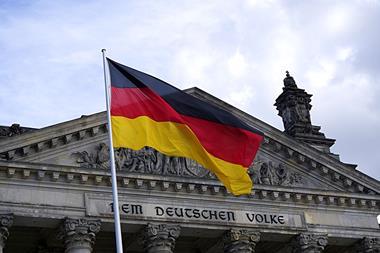IPE talks with Kertu Fedotov, adviser in the insurance policy department at Estonia's ministry of finance, regarding the new measures the government has recently implemented to better regulate asset managers and their investment strategies.
IPE: New measures were implemented on 1 August regarding pension funds and their investment strategies. Could you explain how the regulation will help to change the country's second pension pillar?
KF: From 1 August, the amendments of the compulsory funded pension regulation came into force. The new regulation adds flexibility and deals with risk mitigation.
The rules - which aim to regulate the choice of a new pension fund and the exchange of the pension fund units (transfer of assets to another pension fund) - have been liberalised. It was previously possible to change the units of pension funds and to start contributing to a new one only once a year - in January. But, from 1 August, there is a new option to change the units of pension funds three times a year - in January, May and October - and almost unlimited options to start contributing to the new pension fund.
To increase transparency, asset management companies have also been obliged to disclose pension funds' investment reports monthly, while they were formerly disclosed twice a year. The asset management companies should act in the best interest of pension funds' unit holders.
IPE: You mentioned earlier some restrictions regarding joining a pension scheme. What will they be?
KF: In addition to changing the units of pension funds, the unit holders may decide to start contributions to a new pension fund, in which case there will be no transfer of pension funds' assets to another. There are no time limits for such transactions - transactions should be done within three working days after the submission of the relevant application. We have not yet access to data showing the number of applications made so far.
IPE: What are the other main changes?
KF: The rest of the main amendments concern risk management procedures and investment restrictions. The supplementary investment restrictions for conservative pension funds - pension funds with no equity exposure - have been introduced. These funds will now invest in bonds, as well as in credit risk and currency risk. Investments into bonds must conform with credit rating requirements. Bonds should have an investment grade. Fifty percent of the investments should have at least an A2 credit rating (Moody's) or its equivalent, or a P-1 rating (Moody's) or its equivalent. To reduce the currency risk, conservative pension funds' net open foreign-exchange position has been reduced. Net open position may not exceed 25% of the fund's assets - the former limit was 50%.
We have also imposed stricter restrictions for pension funds' investments into the assets of companies of the same group to which the asset management company belongs, as well as for pension funds' participation in groups' bond issues, to mitigate and avoid, if possible, conflicts of interests that could arise from the transactions mentioned above. However, the amendments have not led to large or conceptual reorganisations in the compulsory funded pensions system.
IPE: In what context has this regulation been implemented?
KF: The imposed amendments rely on the analyses carried out by the ministry of finance in 2009. The focus was on the impact of the financial crisis, and, therefore, the analysis concentrated to the aspects that were most critical during the crisis - the investments of the pension funds, pension funds' risk management, conflicts of interests, information disclosed to unit holders, unit holders and supervisors' options to react to developments taking place in the financial markets.
The compulsory funded pension system turned out to be quite sensitive to the developments that had taken place during the crisis. The pension funds operated diversely during the financial turmoil, and there have also been asset management companies that run their pension funds rather well, even at this time. In conclusion, the regulation of the conservative pension funds turned out to be the ones that needed to be looked at, taking into account the share and role of these types of funds in the system and the investment losses the funds faced during the crisis.












No comments yet